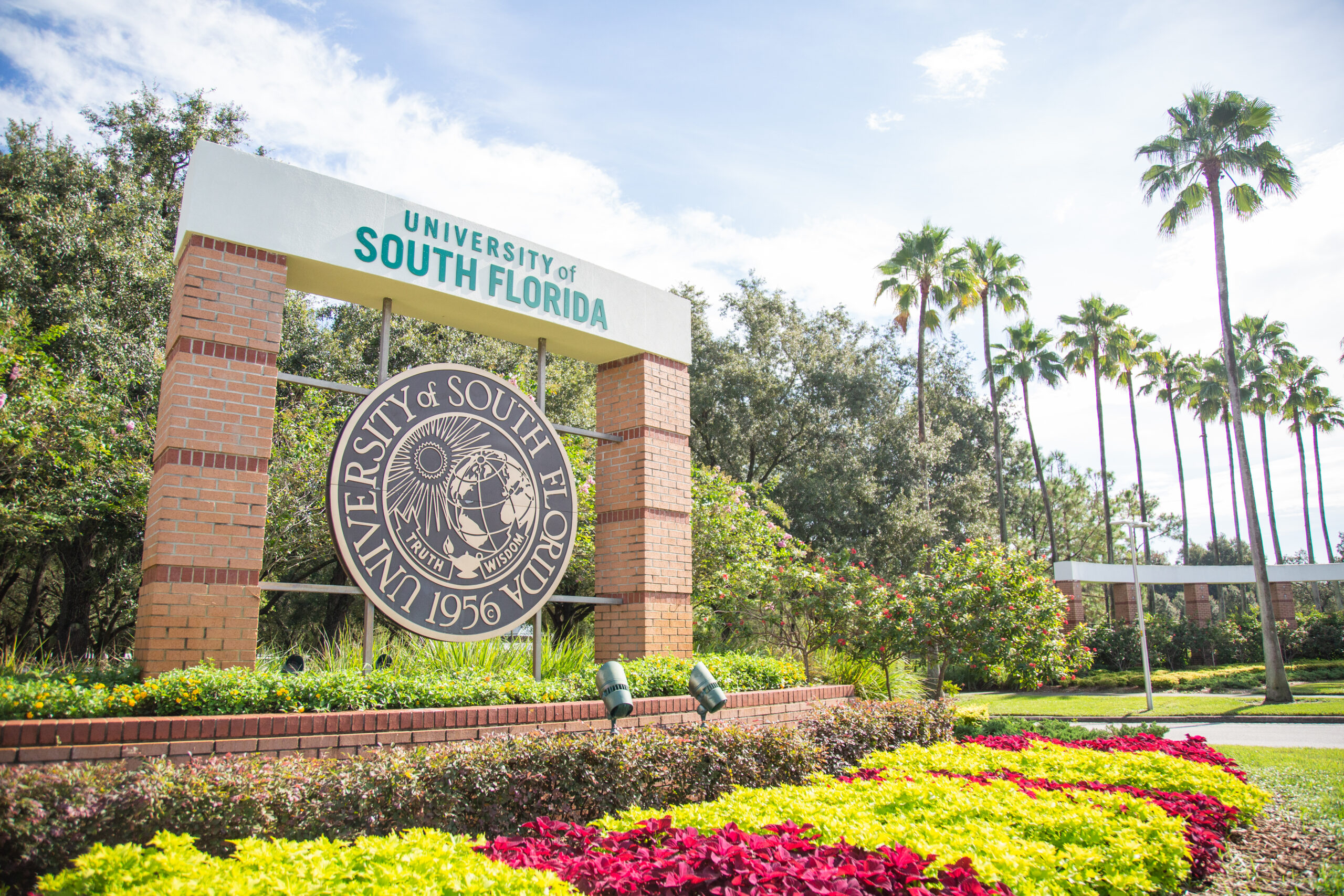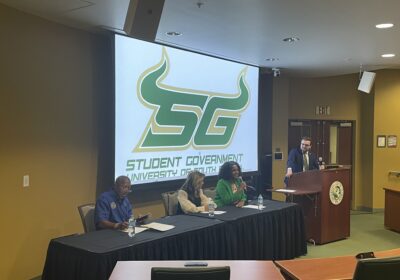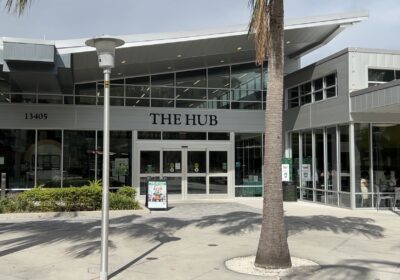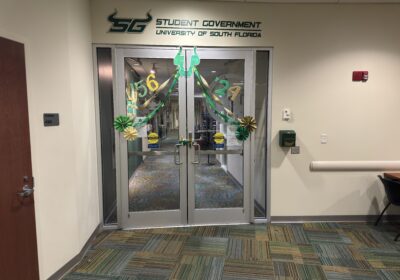BOT approves cost-reduction plan due to financial impact of COVID-19

Amid tensions and concerns, the USF Board of Trustees (BOT) on Wednesday approved a reduction plan to cut 8.5 percent in funding received from the state for the 2020-2021 fiscal year as a result of the financial constraints caused by COVID-19. While still in the planning stages, the projected cuts could potentially lead to layoffs and impact student services, as well as affect the university’s emphasis on research.
With a cut of over $30 million in general revenue and $6 million in lottery appropriations, the estimated total cut for USF is $36.7 million for the fiscal year ending June 30, 2021. The plan included possible reduction strategies as well as descriptions of some of its anticipated impact.
During the BOT meeting, the plan ignited discussions on the timeliness of the cuts as well as their impacts on the university’s preeminence status and performance-based funding.
BOT Vice Chair Stephanie Goforth expressed her concerns on how the university should have acted “months ago” and the urgency to “execute now.”
“I’m a lot concerned over the document itself, not the numbers specifically, but some of the things on here,” Goforth said. “I get where we’re coming from, I get, you know, the whole eight and a half percent but some of the stuff we’ve got to execute on now.”
Considering the future impacts of COVID-19 on state funding, the Board of Governors (BOG) advised all state universities in July to consider the 8.5 percent cut from their current budgets in state funding for the 2020-2021 fiscal year as well as an additional 10 percent cut for the 2021-2022 fiscal year. The estimated cut will encompass five categories across the USF’s operations, including instruction, university support services, academic support services, research and student services.
In the plan, 44 percent, or $16.3 million, of the total cut will fall under the instruction category, leading to the anticipated elimination of academic programs and/or initiatives, limit of course section availability, increase in faculty workload and the reduction of enrollment.
Besides impacting student success, the projected funds could potentially impact USF’s emphasis on research with the reduction and/or elimination of programs focused on best practices for research, reduction of library services, elimination of access to periodical packages and the reduction of travel related to research/professional development.
Research alone will be 12 percent, or $4.2 million, of the total cut, leading to the reduction of research support, delay in upgrades to equipment and research-related technologies as well as the availability of necessary research supplies and a delay in the development of grant proposals.
University support services will be subject to 21 percent, or about $7.7 million of the total reduction for the 2020-2021 fiscal year. Among the services impacted, the budget cut could potentially affect the delivery of core services, including facilities, human resources and technology, as well as impact the overall quality of services, service hours and related response times.
For academic support services, the university projected a 17 percent, or roughly $6 million cut. Such cuts would consequently reduce staff support for faculty and programs, reduce in-classroom support and reduce advising and academic support services.
With a 6 percent, or $2.3 million cut, student services will also be affected, leading to a reduction in services and financial assistance available to undergraduate and graduate students.
The plan will be submitted to the BOG on Friday.
On July 31, Senior Vice President of Business and Financial Strategy David Lechner sent a letter to USF leadership, including college deans, across all three campuses — Tampa, St. Pete and Sarasota-Manatee — requesting a prioritized budget for their campus/college which reflects recurring Educational and General budget reductions at 10 percent, 12.5 percent and 15 percent.
In this budget modeling process, a description of the specific programs, initiatives and services where the cuts would be implemented as well as the dollar amount associated with it had to be included. The deadline to submit was on Aug. 14.
Lechner said at least five percent of those reductions must be planned for the current fiscal year.
“We recognize that the budget planning task and timeline are extremely challenging,” Lechner wrote in the letter. “But, as you know, the Governor, State Legislature, SUS and others are having to make similar, difficult decisions.”
For BOT Chair Jordan Zimmerman, the university has to move “faster and swifter” when it comes to implementing the cuts so it does not fall behind.
“As we start moving forward, we want to make sure we get ahead of there right now. I think we’re starting a little bit behind,” Zimmerman said. “And I know they’ve started making some of these cuts already, but we have to move faster and swifter.”
In regard to the timeliness of the plan, USF President Steven Currall emphasized the university is “not waiting for the state’s budget downfall” to implement the cuts.
“We’re not trying to look into a crystal ball and figure out what the state is doing and then begin planning or taking action, we’re already doing that and we’re using those scenarios which are frankly more draconian to do our planning,” Currall said.
“We’re following the state closely, but we’re not waiting for any final budget deliberations from the state in order to do our own planning for this year and the subsequent year.”
While Zimmerman and Currall affirmed that the university already started implementing some of the cuts, university spokesperson Adam Freeman said the university “still remains in the planning stages and specific cuts have not been determined or implemented.”
Included in the 8.5 percent potential decrease in state funding, a 6 percent holdback had already been enacted by the state for the 2020-2021 fiscal year. For that to become a permanent cut, Vice President of Business and Finance and CFO Nick Trivunovich said it needs to be passed by the legislature.
For Trivunovich, “eight and a half percent is a pretty definitive number.”
“We’re concerned as that’s something that actually could take place at this point. We are planning for reductions and reallocation based on a potential 8.5 percent reduction so we’re moving, we’re trying to move forward, making some of these conservative assumptions at this point.”
In regard to performance-based funding and maintaining the preeminence status, Zimmerman assured that they will not be affected by the cuts.
“We’re going to do everything possible not to inflict any pain on our performance-based funding and our preeminence funding or preeminent records,” Zimmerman said.
Despite the projected cuts creating significant constraints for the university, Zimmerman said the decisions should be based on the worst-case scenario.
“I think we have to look at the worst-case scenario … and plan for the worst,” Zimmerman said. “We could adjust for the best. I never want to be caught behind where it winds up being a greater loss than we suspected would be.”






